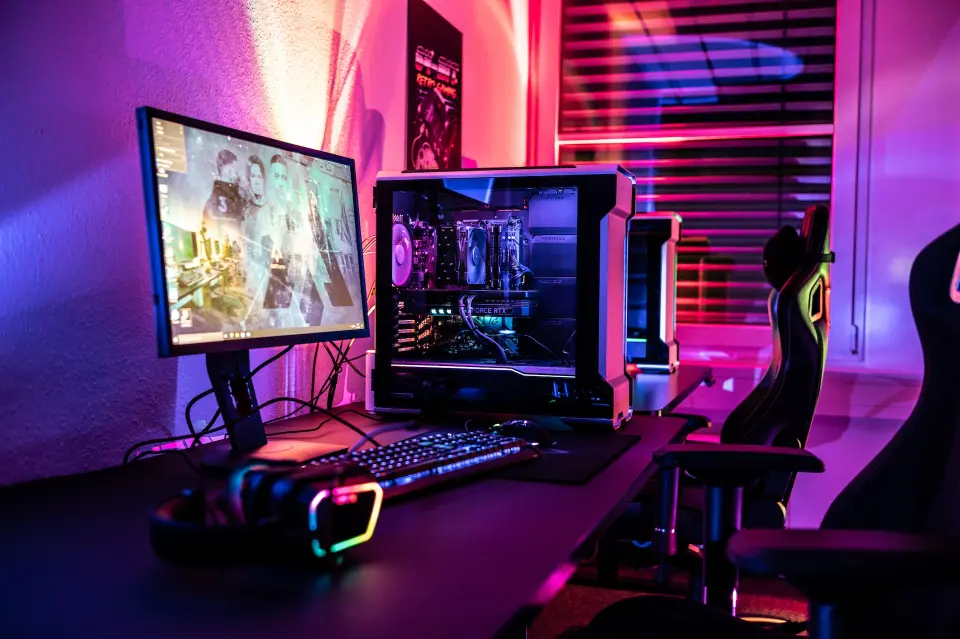In the online world, blogs play a significant role. But what exactly is a blog? Essentially, a blog is an interactive diary or website where individuals can share their thoughts, experiences, and expertise with a broader audience. It serves as a platform for writers, enthusiasts, and businesses to express themselves and engage with people interested in similar topics.
In this article, we’ll delve into the concept of “what is a blog,” break down its various components, and discuss its importance in today’s online landscape. Let’s dive in!
Table of Contents
What Is A Blog
A blog is more like an informational website where individuals or companies can share their thoughts, opinions, experiences, and information on various topics and products. The term blog is a shortened form of “weblog.”
Blogs typically consist of a series of posts or articles written in a conversational or informal style. Each post is displayed in reverse chronological order: the new post is displayed at the top, and the old post is displayed at the bottom.
Blogs are managed by individuals, known as bloggers, who regularly update their blogs with new content. They cover many topics like personal experiences, travel, technology, fashion, and politics, which are few to name. Organizations, businesses, and media companies also use blogs to communicate with their audience and share information on their services and products.
What is Blog Structure
The appearance and structure of a blog can vary depending on the theme or platform used, as well as the blogger’s preference.
Here are a few components of a typical blog :
★ Header: The header is located at the top of the blog and contains the blog’s name or logo. It may also include a navigation menu with links to different sections or pages of the blog.
★ Blog Posts: The main content of a blog is generally displayed as individual posts. Each post usually has a title, date, and author name. The content can include text, images, videos, or a combination of media.
★ Sidebar: The sidebar is a vertical column often placed next to the blog posts. It provides additional information and navigation options. Common elements found in the sidebar include a search bar, categories or tags for organizing posts, popular posts, social media links, and advertisements.
★ Comments Section: Many blogs have a section at the end of each blog post where readers can leave comments and engage in discussions with the blogger and other readers. Comments may include text, links, or media.
★ Footer: The footer is located at the bottom of the blog and typically contains copyright information, links to important pages (such as the About page or Contact page), and sometimes additional navigation options.
★ Navigation Menu: Blogs often have a navigation menu located in the header or sidebar. This menu may include links to different sections of the blog, such as the homepage, About page, Contact page, and specific categories or tags.
Blog vs Website
The main difference between a website and a blog lies in the type of content they offer and the frequency of updates. A website typically contains static information about a business or a company, including its location, products or services, company background, and other relevant details. It is updated less frequently and is a central hub for business-related information.
On the other hand, A blog is sometimes a section of a website or an independent platform where content is regularly published and updated. It allows businesses to share information, insights, or opinions on various topics related to their industry or niche. Not only can companies have blogs, but individuals such as bloggers can have their own blogs with a specific niche selected. Blogs offer more creative freedom and flexibility in terms of content creation.
Blogs encourage audience engagement through features like comment sections, enabling readers to interact with the business and provide feedback, ask questions, or share their ideas on blog posts.
Blog vs Wiki
Blogs are platforms where bloggers or businesses share their thoughts, experiences, or news on specific topics through posts. One or a few individuals author them, and interaction occurs primarily through comments.
Sites like Wikipedia are good examples of Wiki. Wikis are collaborative platforms that enable multiple users to create, edit, and organize content collectively.
While blogs focus on individual authorship and opinions, wikis prioritize collaborative knowledge creation and editing.
What is the purpose of a blog?
As An Individual/Blogger
★ Self-Expression: A blog allows individuals to express themselves by sharing their thoughts, ideas, and experiences with others. It’s a way to communicate and connect with like-minded people.
★ Sharing Knowledge: Some individuals use blogs to share their expertise and knowledge on specific topics. They can provide valuable information, tips, or insights that they have learned and want to share with others.
★ Building an Online Presence: A blog helps individuals establish a presence on the internet. By consistently creating and sharing content, they can showcase their skills, interests, and unique perspectives, leading to new opportunities or connections.
★ Connecting with Others: Blogging allows individuals to connect with people who share similar interests or experiences. They can build relationships and a supportive network by engaging with readers and participating in online communities.
★ Personal Development: Maintaining a blog requires continuous learning and research. It can be a way for individuals to grow personally by exploring topics they are passionate about and sharing what they learn with others.
★ Creativity: Blogs can be an outlet for creative expression, such as writing, photography, or art. They provide a space to showcase and share creative works with a wider audience.
As A Business/Company
★Showcasing Products or Services: A blog allows a business to highlight its products or services in a more detailed and informative way. It can explain the offerings’ benefits, features, and different uses, helping potential customers make informed decisions.
★ Building Trust and Credibility: By sharing valuable and relevant content on a blog, a business can establish itself as a trusted and knowledgeable source in its industry. This helps build credibility with customers and potential clients.
★ Increasing Website Traffic: A blog can drive more people to a company’s website. When the blog has interesting and helpful content, it can attract visitors who are searching for information related to the business’s products or services.
★ Search Engine Optimization (SEO): A well-maintained blog with relevant content can improve a business’s visibility in search engine results. This means that when people search for topics related to the business, the blog posts have a higher chance of appearing in the search results.
★ Generating Leads: A blog can be a tool for lead generation. By offering valuable content, a business can attract visitors who are interested in what they have to offer. They can then convert these visitors into leads by encouraging them to sign up for newsletters, download resources, or take other actions.
Types of blogs
Here are 5 main types of blogs to consider :
Business/Company Blog
A business or company blog is a platform created by a business or organization to communicate with its audience. It serves multiple purposes, including branding, promotion, thought leadership, customer engagement, content marketing, SEO, product education, industry insights, and employee communication.
The blog helps establish the brand identity, promote products or services, showcase expertise, engage with customers, provide valuable content, improve search engine visibility, educate about products, share industry news, and foster internal communication.
A business blog enables businesses to connect with their audience, build relationships, and establish their authority in the industry.
Personal Blog
A personal blog is a platform where individuals can express themselves and share their experiences, interests, and expertise. It allows for self-expression, reflection, and personal growth.
Personal blogs create communities of like-minded individuals and provide networking opportunities. They serve as creative outlets, enabling individuals to showcase their skills and share knowledge. Personal blogs offer a space for individuals to leave their mark and connect with others in the digital world.
Niche Blog
A niche blog is a specialized blog that focuses on a specific topic or industry. It targets a specific audience interested in that particular subject. Niche blogs delve deep into their chosen topic, providing valuable and in-depth content.
They attract a dedicated following and can establish the blogger as an expert in their niche. By catering to a specific audience, niche blogs can effectively engage readers, build a community, and generate monetization opportunities.
Here are a few niche blog inspirations :
★ Travel Blog
★ Lifestyle Blog
News Blog
A news blog is a blog that focuses mainly on providing up-to-date news, analysis, and writing on various topics. It covers current events and breaking news and provides in-depth coverage and insights into the latest happenings.
A news blog aims to keep readers informed and engaged by providing timely and relevant information on a wide range of subjects, such as politics, business, technology, entertainment, sports, and many more.
Affiliate Blog
An affiliate blog is a type of blog that generates revenue through affiliate marketing. It promotes products or services through product reviews, recommendations, and comparisons, using unique affiliate links.
When readers click on these links and make a purchase, the blogger earns a commission. Affiliate blogs focus on providing valuable content and helping readers make informed purchasing decisions while monetizing their blogs through affiliate partnerships.
What to include in a blog
When creating a blog, it’s important to consider what components to include to make it engaging and valuable for your readers.
A few things to consider :
Clear Content: Your blog should feature high-quality, engaging, and relevant content that appeals to your target audience. This can include informative articles, how-to guides, opinion pieces, tutorials, case studies, interviews, and many more.
Well-Structured Posts: Organize your blog posts with clear headings, subheadings, and paragraphs to make them skimable and easy to read. Use bullet points, numbered lists, and formatting options such as bold or italics to highlight key points.
Internal and External Links: Link to your related blog posts or pages within your website to improve navigation and encourage readers to explore more of your content. Also, include external links to reputable sources, studies, or articles that support or provide additional information on the topic you’re discussing.
Author Bio and Social Sharing Buttons: Include a brief author bio at the end of each blog post, providing information about the writer and their expertise. Also, include social sharing buttons to make it easy for readers to share your blog posts on their social media platforms which increases your blog’s visibility and reach.
Comments Section: Enable comments on your blog posts to encourage reader engagement and foster discussions. Respond to comments to further engage with your audience and build a sense of community around your blog.
How to start a blog As a Blogger?
Now we have covered the basics of the blog- from what is a blog, what its purpose is, and the types of a blog. Now it is time to start a blog.
Here are the basic 6 steps to consider when starting a blog :
01. Blog Name/Domain Name- Your domain name should always be your blog name, generally, it is the address to your blog when people type it on their browser. Use a tool like Domainr to check the availability and variations of the domain.
02. Blogging Platform- There are many blogging platforms out there but we recommend WordPress.org as our top recommendation.
03. Web Hosting Provider- After the platform is selected, you should select a web hosting provider, the hosting provider hosts the website, and stores all the relevant files and contents of the blog. Use a host like HostGator they have dedicated hosting plans for WordPress sites.
04. Customize The Theme – Now you should make modifications and changes to the selected theme that suits your style and content.
05. Install The Plugins- Plugins are essential, they enhance the functionality of the site and also help to manage the blog.
06. Create Engaging Content- Now all set, you should start writing engaging SEO-friendly content to boost the ranking.




